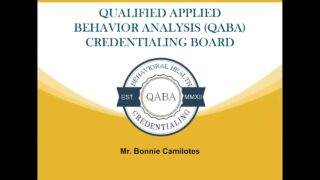Verbal and Non Verbal Codes and the Third Space in Intercultural Communication | Prof. Nelfa Glova
Verbal and Non Verbal Codes and the Third Space in Intercultural Communication
Prof. Nelfa Glova
UP Mindanao
Knowledge of communication styles across cultures is the first step in building intercultural competence. Every culture involves a complex web of meanings that are both created and reproduced in a shared physical space, social institutions and practices through language, performance, and the media. People [that belong] into different cultural frameworks are characterized by distinct modes of expression and, sometimes, this makes intercultural encounters prone to semantic and pragmatic misunderstandings.
Edward T. Hall, the father of Intercultural Communication, defined that “Each culture has a hidden code of behavior that can rarely be understood without a code breaker.” Thus, to commune with another culture, one has to develop an understanding of a symbol systems of its participants. Communication styles include those verbal codes and non verbal displays which form part of the behavior of individuals or groups of people during intercultural settings. These verbal codes and non-verbal displays serve to express internal states, construct identities, regulate interaction, emphasize the message, and—in the case of non-verbal behavior—substitute for words in context where verbalization alone would not suffice.
The literature points out the four basic verbal communication styles that characterize cultures based on cultural contexts and value dimensions.
First is law-context versus high-context communication styles. Low context communication uses explicit verbal codes and the meanings are derived from the utterance. Meanwhile, high-context communication relies in non-explicit verbal codes and interactants pay attention to the implied meanings of what is being said. As such, the low-context communication style is more sensitive to non verbal elements of the communicative situation.
Second is direct versus indirect verbal communication styles. In direct verbal communication style, intentions, ideas, and needs are expressed in an outright way whereas the indirect verbal communication style is characterized by the use of figurative speech and layering of intentions.
Third is self-enhancing versus self-effacing verbal communication styles. Self-enhancing verbal communication style is assertive and openly proclaims one’s abilities and accomplishments. The self-effacing verbal communication style is the opposite as it is defined by modest talk and a perceptible hesitation to call attention to personal accomplishments.
Fourth is elaborate versus understated verbal communication styles. The elaborate verbal communication style is defined by loud, open, and animated expressions. On the other side, the understated verbal communication style is filled with silence and understatements.
In terms of non-verbal displays, there are nine non verbal codes that are said to characterize cultural groups. This are the appearance, proxemics, chronemics, kinesics, haptics, oculesics, vocalics, offactics, and silence.
Appearance is the most obvious non-verbal code that may indicate age, gender, nationality, education, economic status, lifestyle, and attitude. These impressions shape how we relate to others.
Proxemics is the use of interpersonal space and distance. Research shows that cultures differ substantially in their use of personal space, concept of territory, and the meanings assigned to proxemic behavior.
Chronomics refers to the study of meanings, usage, and communication of time such as punctuality and pace. The monochronic concepts of time is linear sequential and segmented so that time is understood to be scarce, thus, it has to be spent wisely on achieving tasks. On the other hand, the polychronic concept of time has a leisurely pace and underscores the importance and quality of human relationships.
Gestures or kinesics include posture, movements, gestures, and facial expressions. Gestures are hand movements used basically to signal speech and to convey messages that vary in meaning, extensiveness, and intensity. Facial expressions are also culturally learned. Ekman and Friesen, for example, noted six ways in which facial expressions are managed: outrightly expressing, amplifying, demulsifying, masking, combining expressions, and neutralizing.
Haptics or tactile communication differ in amount, location, type, and public or private manifestation. Haptics or touch indicates certain emotions. The valence that are assigned to different types of touch are culturally learned.
Oculesics deals with messages sent by the eyes such as eye contact. Eye movement and contact are expressions of thought, feedback, attention, and regulation of conversation. The number and type of messages that an eye contact or gaze could send carry cultural dimensions.
Vocalics or paralanguage refers to the non-verbal elements of voice, or the tone of human voice. Vocal cues also provide information when we appraise other people. Paralanguage has three categories: vocal qualities, vocal characterizers, and vocal segregates. Vocal qualities include volume, rate, pitch, tempo, resonance, pronunciation, and tone.
Olfactics is a means of interpersonal communication via smell. Smell is not only associated to memories but also hint cultural orientations and practices. Firstly, certain smells are connected to diet, bodily rituals, and geography. Secondly, the ability to smell and give valence to certain types of smell is also culturally conditioned.
Often treated as a mere background of speech, silence is a complex and powerful element of human interaction that is culturally determined and communicates certain aspects of a culture. Some cultures are known for their articulation and volubility while others are known for intermittent silences. Across cultures, silence plays cognitive, discursive, social, and affective functions. As a social phenomenon, it regulates social distance, impression-formation, social control, and role and power negotiation. The degree, frequency, type, and meaning of silence is where cultures differ.
This categorizations of verbal and non-verbal codes appear to be loosed and well defined, yet students and practitioners of intercultural communication are advised not to treat these communication styles as mere polarities. An emergent body of research, influenced by postmodernist theories, decried a seemingly essentialist pronouncement of cultures, when we look at it as being one if not the other—high-context if not low-context, indirect if not direct.
Accordingly, treating cultures as binary oppositions tend to reinforce even more existing cultural boundaries, treat cultures as a monolithic phenomena, and ignores the facts that cultural differences are not fixed but negotiated.
Communicative behavior as reflective of negotiation necessitates that we consider intercultural communication as a constitutive phenomenon. As such, it is a space where individuals from different cultural backgrounds meet and are characterized by differences that are not fixed but are in constant redefinition reflecting the multiplicity of cultural identities.
Similar to other forms of communication, we describe intercultural communication through its communicative elements: the source, the message, the encoding process, the channel, the receiver, the decoding process, and the effect. But what makes intercultural communication a unique phenomenon is that it spells out interactions between individuals, [groups] of people whose cultural backgrounds vary enough as to influence the communicative outcomes.
Intercultural communication is not just the story of two or more individuals talking and finding that, through the course of conversation, there are ideas that are mutually understood, there are those that are ambiguous and there are those that clearly misunderstood. Intercultural communication can be fully appreciated if we examine how people with different cultural frameworks co-create a communicative space whether differences and similarities are reconciled and how this process impacts the current and future relationships with each other and with other people. At times, this process of negotiation of meaning is not on an equal of footing. Leaving one of the parties leaning more towards assimilation or integration, if not separation from the dominant culture as the case of sojourners in order to cope with the stresses that accompany the acculturation process.
Intercultural encounters can be imagined as contact zones or social spaces where different cultures meet, collide, and struggle with each other. Often in highly asymmetrical relationships of dominance and subordination. Indeed, due to power of differences between groups, intercultural experiences could lead to inclusion or exclusion.
Homi Bhabha referred to these contact zones or social spaces as “the third space” which he defined as the “in-between” space in the clash between cultures where meaning and representation are negotiated and cultural identity can be re-imagined. For Bhabha, cultures are in constant process of hybridity. Cultural differences are not fixed but rather negotiated in the instant of enunciation. Cultural meanings change permanently as influenced by the continuous process of negotiation. The confrontation with the unfamiliar encourage opportunities for change; new meanings become emergent, existing structures are interrogated and relationship between the dominant culture and the subordinated culture are modified. Individual experiences of “third space” vary and their meanings stand to shift across context and times.
All these form the bases for the concept of “third space” or “third culture” in intercultural communication where individuals from different cultures who interact with each other make adjustments to their own sense of cultural identity in order to explore new ways of building relationships. Exposure to otherness may influence individuals to expand their perspectives of the world and come to resolve the multiplicity of cultural identities in terms of their cognitive, behavioral and moral dimensions.
Intercultural communication scholar Katherine Sorrells, put forward six entry points for intercultural practices which may help us enhance our intercultural communication competence turning the “third space” into an ideal place for establishing fulfilling intercultural relationships. These entry points are inquiry, framing, positioning, dialogue, reflection, and action.
By inquiry, we take an interest in and became committed to learn about cultures which opens opportunities to engage with others.
Under framing, we recognize that our perspectives are shaped by frames and to address this, we need to educate ourselves about the local and global factors behind intercultural interactions such as the histories of people.
In positioning, we acknowledge that our geographic positions are closely tied to our social and political positions. Some of us may be in a geographic location that affords us direct access to the material and symbolic resources in society where others may not. It would be better to identify which voices are dominant, which ones are silenced.
Dialogue offers an opportunity, in Sorrell’s words, “to stretch ourselves—to reach across—to imagine, experience and creatively engage with points of view, ways of thinking and being, and beliefs different from our own while accepting that we may not fully understand or come to a common agreement or position.”
With reflection, we make introspections and modify our views and behavior.
Finally, Sorrells argued that it is not enough that we modified our thoughts and feelings in accordance with the ideals of cultural and political inclusiveness. We must also take action to help promote social justice. Accordingly, treating cultures as binary oppositions tend to reinforce even more existing cultural boundaries, treat cultures as monolithic phenomena and ignores the fact that cultural differences are not fixed but negotiated.
How useful was this resource?
Click on a star to rate it!
Average rating 0 / 5. Vote count: 0
No votes so far! Be the first to rate this post.
We are sorry that this post was not useful for you!
Let us improve this post!
Tell us how we can improve this post?



























